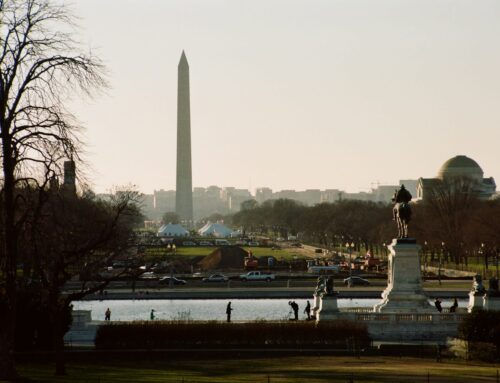The Claim-Patent System: Fueling a 135-Year Heist of Public Lands
Under this law, any person or business, foreign or domestic that shows intent of mineral development can permanently acquire public land at the per-acre price of $2.50 for placer claims and $5.00 for lode claims. Patenting conveys full title of both the land and mineral rights of a claim; however, patents are not actually required for mineral development.[i]
Since 1872, billions of dollars of federal mineral reserves have essentially been given away because patent prices established under the Mining Law have not changed since the law’s passage to reflect fair market value, and no royalties are required to be paid on the precious minerals that are mined.
Despite a now thriving, diversified, western economy, the law that gave mining companies economic advantage over other industries over 135-year ago has changed little since its passage. This system – the permanent sale of public lands through patenting at prices absurdly below fair market value – has evolved little over the years to reflect changes in land-value or the development of multiple-use principles that now govern federal land management agencies.
Since 1867, taxpayers have given away 3,264,252 acres of public land to foreign and domestic hardrock mining companies for a pittance. [ii] With each acre of federal land that mine operators acquire, U.S. citizens and future generations unwittingly forego many valuable alternative uses of this land, including outdoor recreation, scientific study, livestock grazing, and cultural and historic interpretation. Mining firms on the other hand, continue to receive title to minerals that are worth exponentially more than the prices they paid. Applicants have also used patented public land for purposes unrelated to mining, such as personal recreation retreats and development properties, or have managed land as speculative holdings even though law technically prohibits such conduct.[iii]
The past century brought notable advancements in many areas of federal minerals management; however, none have included permanent reform of federal land giveaways to the hardrock mining industry.[iv]
In 1994, Congress first prohibited the sale of federal lands to hardrock mining companies by passing a patent moratorium provision on the year’s Interior Appropriations bill. This moratorium remains in effect through consecutive annual renewals, signifying a bipartisan understanding by Congress and the administration that the claim-patent system fostered under the 1872 Mining Law needs to change. The next logical step is to permanently eliminate the 135-year old claim-patent system and replace it with a system that will provide taxpayers a fair return for these valuable resources and ensure fair domestic treatment of all U.S. mineral commodities.
Hardrock Robber Barons
- In 1994, Barrick Resources, a Canadian mining corporation, secured patents to over 1,800 acres of U.S. public lands for an estimated price of $9,000. Sources estimate the amount of gold on this land to be worth over $10 billion – one of the largest deposits in U.S. history. [v]
- The Stillwater Mining Company filed for patents on 2,000 acres of National Forest land in Montana, paying only $10,000 for the title. It is estimated that this land contains $35 million worth of palladium and platinum reserves. [vi]
- Prior to the 1994 and subsequent patent moratoriums, the federal government was set to sell public lands with mineral reserves worth over $34 billion to private mining companies for just $82,788.
- From 1867 through September 30, 2001, the Department of Interior issued 65,217 mineral patents handing over a total of 3,264,252 acres – an area larger than the state of Connecticut – from the public domain.
- A GAO examination of twelve patent applications found that public land appraised at between $14.4 million and $47.1 million was to be sold to mining companies for an estimated price of $16,000. [vii]
- In 1983, 160 acres of National Forest land in Colorado was sold to an individual for $400. Though patented for the purpose of placer gold mining, five years later not one ounce of gold had been mined. Instead, the owner re-sold some of this once federal property for 4,400 times more than he paid the federal government. [viii]
[i] Congressional Research Service, Mining on Federal Lands, January 11, 2005, http://digital.library.unt.edu/govdocs/crs/permalink/meta-crs-10097:1
[ii] Figure based on a July 11, 2002 communication with Roger A. Haskins, Senior Specialist for Mining Law Adjudication, Bureau of Land Management.
[iii] In California, federal lands set aside for mining have been used instead for private recreational retreats, marijuana farms, junkyards, rent-free lots and other illegitimate purposes. Source: Tom Knudson, McClatchy news service, “Western Mining: Riches and Ruin” The Orange County Register, June 24, 1990 Sunday Edition.
[iv] In 1920, the Mineral Leasing Act removed oil, gas, oil shale, phosphates, sodium, and other minerals from the Mining Law claim-patent system. Coal, which was previously managed through its own claim-patent system under the 1873 Coal Act, was also included in this early restructuring. Congressional Research Service, Mining on Federal Lands, April 3, 2002, p.3-4.
[v] Former Congressman Dale Bumpers, “Capitol Hill’s Longest Running Outrage,” The Washington Monthly, January 1998.
[vi] Congressional Research Service, Mining on Federal Lands, April 3, 2002, p. 2.
[vii] Government Accounting Office (GAO), Budget Implications of GAO Work, 1999, p. 100.
[viii] Mineral Policy Center, Golden Patents, Empty Pockets, June 1994, p. 57.







Get Social